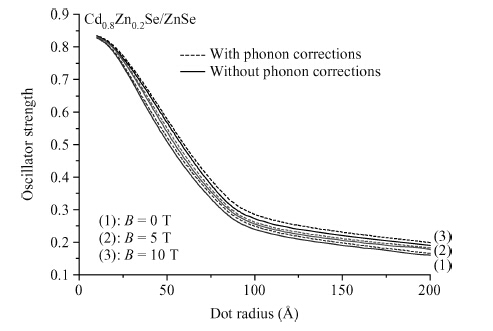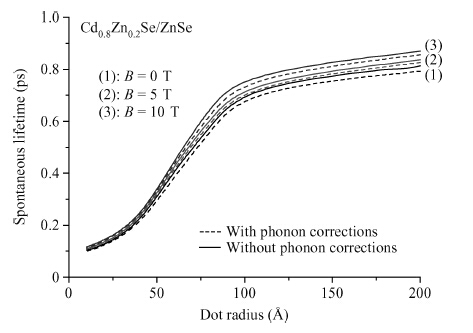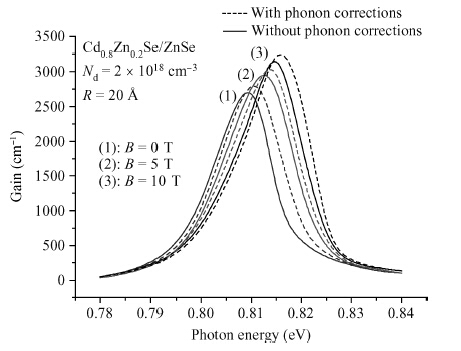| Citation: |
P. Christina Lily Jasmine, A. John Peter. Magneto-polaron induced intersubband optical transition in a wide band gap II—VI semiconductor quantum dot[J]. Journal of Semiconductors, 2015, 36(3): 032001. doi: 10.1088/1674-4926/36/3/032001
****
P. Christina Lily Jasmine, A. John Peter. Magneto-polaron induced intersubband optical transition in a wide band gap II—VI semiconductor quantum dot[J]. J. Semicond., 2015, 36(3): 032001. doi: 10.1088/1674-4926/36/3/032001.
|
Magneto-polaron induced intersubband optical transition in a wide band gap II—VI semiconductor quantum dot
DOI: 10.1088/1674-4926/36/3/032001
More Information
-
Abstract
Effects of LO-phonon contribution on the electronic and the optical properties are investigated in a Cd0.8Zn0.2Se/ZnSe quantum dot in the presence of magnetic field strength. The magneto-polaron induced hydrogenic binding energy as a function of dot radius in the wide band gap quantum dot is calculated. The oscillator strength and the spontaneous lifetime are studied taking into account the spatial confinement, magnetic field strength and the phonon contribution. Numerical calculations are carried out using variational formulism within the single band effective mass approximation. The optical properties are computed with the compact density matrix method. The magneto-polaron induced optical gain as a function of photon energy is observed. The results show that the optical telecommunication wavelength in the fiber optic communications can be achieved using CdSe/ZnSe semiconductors and it can be tuned with the proper applications of external perturbations. -
References
[1] [2] [3] [4] [5] [6] [7] [8] [9] [10] [11] [12] [13] [14] [15] [16] [17] [18] [19] [20] [21] [22] [23] [24] [25] [26] [27] [28] [29] [30] [31] [32] [33] [34] [35] [36] -
Proportional views






 DownLoad:
DownLoad:


















